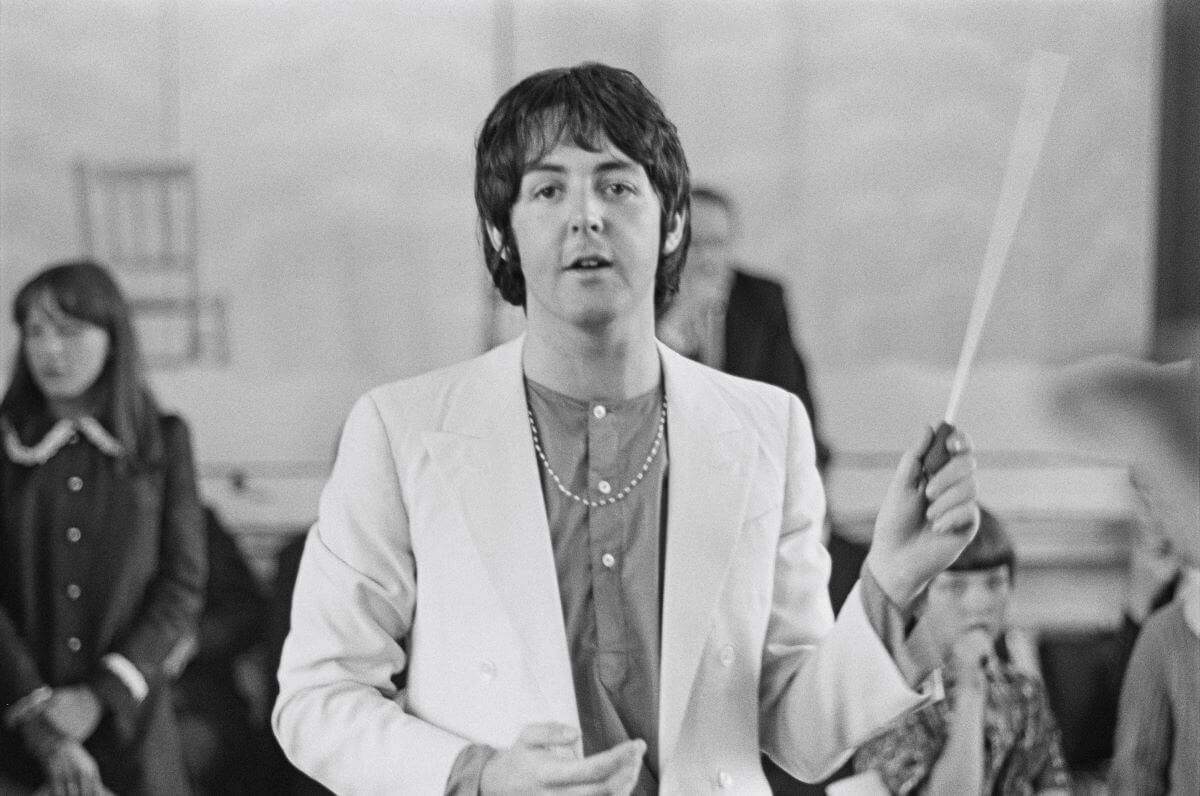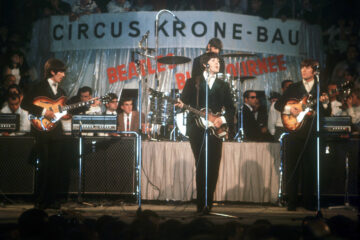When George Martin told Paul McCartney that they should add a double string quartet to “Eleanor Rigby,” he was wary. He didn’t necessarily want that type of sound. Eventually, though, he agreed, so long as they followed his vision for the song. This particular vision horrified the string musicians. A Beatles audio engineer shared how they reacted and how they finally achieved the finished product.
Paul McCartney had a specific vision for the strings on ‘Eleanor Rigby’
McCartney initially played “Eleanor Rigby” on the acoustic guitar. When producer George Martin suggested they get a double string quartet, McCartney hesitantly agreed. He insisted that they achieve a “really biting” sound with the strings, though. This request meant that audio engineer Geoff Emerick had to get creative in the studio.
“String quartets were traditionally recorded with just one or two microphones, placed high, several feet up in the air so that the sounds of the bows scraping couldn’t be heard,” Emerick wrote in his book Here, There and Everywhere: My Life Recording the Music of the Beatles. “But with Paul’s directive in mind, I decided to close-mic the instruments, which was a new concept.”
This move did not go over well with the string musicians.
“The musicians were horrified!” Emerick wrote. “One of them gave me a look of disdain, rolled his eyes to the ceiling, and said under his breath, ‘You can’t do that, you know.’”
While this worried Emerick, he moved forward with his idea. He understood that it was uncomfortable to have the mics so close that they would amplify even the smallest mistake. Still, he wanted to achieve McCartney’s vision.
“We did one take with the mics fairly close, then on the next take I decided to get
extreme and move the mics in really close — perhaps just an inch or so away from each instrument,” he explained. “It was a fine line; I didn’t want to make the musicians so uncomfortable that they couldn’t give their best performance, but my job was to achieve what Paul wanted.”
Everyone was happy with the finished result
Despite Emerick’s best efforts, the string musicians tried to move away from the closely placed mics.
“Even without peering through the control room glass, I could hear the sound of the eight musicians sliding their chairs back before every take, so I had to keep going down there and moving the mics back in closer after every take; it was comic, really,” he wrote. “Finally, George Martin told them pointedly to stop moving off mic.”
Finally, though, they achieved the sound they wanted.
“In the end, the players did a good job, though they clearly were annoyed, so much so that they declined an invitation to listen to the playback,” Emerick wrote. “We didn’t really care what they thought, anyway — we were pleased that we had come up with another new sound, which was really a combination of Paul’s vision and mine.”
Why Paul McCartney didn’t initially want strings on ‘Eleanor Rigby’
While McCartney’s song “Yesterday” had previously used strings to great effect, he shied away from the idea of using them on “Eleanor Rigby.” He felt The Beatles were a rock ‘n’ roll band.
“Paul wasn’t immediately enamored of the concept,” Emerick wrote. “He was afraid of it sounding too cloying — too ‘Mancini’ — but George [Martin] eventually talked him into it, assuring him he would write a string arrangement that would be suitable.”
Martin did exactly what he promised. He wrote a string arrangement that fits the song beautifully and brought the sound McCartney wanted to “Eleanor Rigby.”



